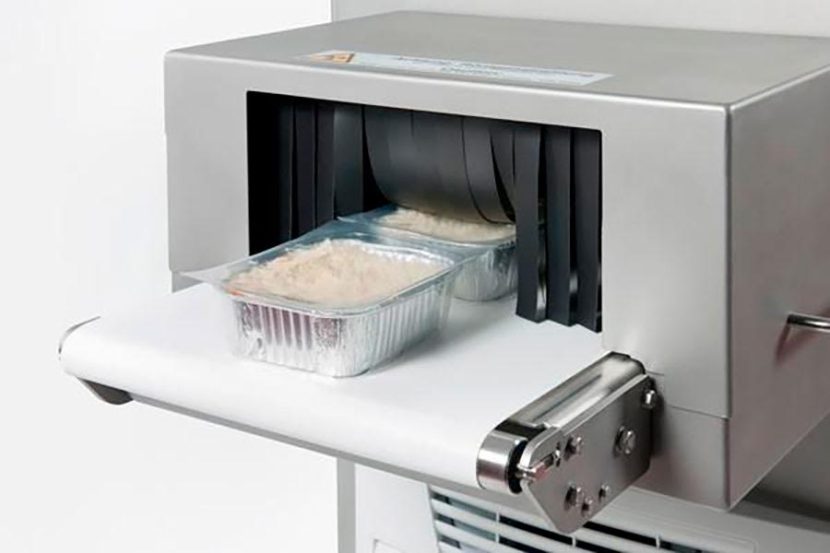Three Systems for Advance Detection of Physical Hazards:
Which One Should You Implement?
By Beth Driscoll
Physical hazards are no small issue in the food industry. In Canada, there have been more than two dozen recalls so far in 2017, and there were more than 50 in 2016. These hazards range from the common (insects) to the harmful (glass, plastic, or metal) to the unusual (bird fragments in sugar ). Known as “extraneous materials” (EM), they may harm the consumer by causing injury or choking, and therefore both the Canadian and American governments have set maximum acceptable sizes of 2 mm and 7mm respectively. To manage the risk of EM, companies use a variety of advanced detection systems (ADS) to identify and remove these hazards.
To determine what kind of ADS your company needs, use your HACCP plan to identify the types of EM that are likely in your product and process. Are they intrinsic (i.e. EM that are part of the food, such as stems in raisins) or extrinsic (i.e. EM that are not part of the food, such as metal fragments in ground beef)? An ADS operates by identifying the foreign material based on its physical properties, including colour, size, density, and composition, and so intrinsic hazards are often harder to remove because they resemble the food itself. For example, a grasshopper is very similar to a green bean in size, shape, colour, and composition, whereas a nail or metal fragment is distinctly different.
 The food industry uses three main types of ADS to detect physical hazards: metal detection, optical sorting, and x-ray inspection. All three require high tech, expensive pieces of equipment, but they operate on the same basic premise: each generates a field or beam that is disrupted when a piece of contaminated food passes through it. A sensor detects this disruption, and a reject mechanism removes the item.
The food industry uses three main types of ADS to detect physical hazards: metal detection, optical sorting, and x-ray inspection. All three require high tech, expensive pieces of equipment, but they operate on the same basic premise: each generates a field or beam that is disrupted when a piece of contaminated food passes through it. A sensor detects this disruption, and a reject mechanism removes the item.
Metal Detection
Metal detectors create an electromagnetic field which is disturbed by the presence of metal in the food. It is most useful for detecting ferrous (magnetic) metals in dry foods, and it’s least useful for non-ferrous metals and stainless steel; furthermore, the contaminant must be both large enough and oriented in the correct way in order to be detected. This equipment works best with foods that are not wet, frozen, or which can conduct electricity; it’s also best if the food itself is not magnetic. Nor can this equipment detect quality defects such as broken skin on fruit, or EM other than metal such as glass or plastic.
Optical Sorting
Optical sorting uses light or lasers to detect foreign material or quality defects on the exterior of the food. As the food passes through the beam, differences in the reflection of light between the food and the EM are detected and this activates the reject mechanism. Optical sorters can detect both extrinsic Ems (e.g. pits in raisins), but work best on dry and solid foods, e.g. nuts or seeds. They can’t be used on packaged items, nor can they detect extrinsic EM inside a product.
X-Ray Inspection
X-ray inspection detects the difference in density between the food and the EM based on their absorption of the x-rays. Unlike optical sorters—but similar to metal detectors—x-rays can detect EM in the interior of the food. However, foods and EM with similar densities challenge the effectiveness of the x-ray equipment and therefore it is not as effective as detecting non-food items that have a similar density to the food (e.g. plastic, vegetable matter, wood, etc.).
A comprehensive HACCP plan is critical to choosing the correct ADS system because it identifies hazards (intrinsic vs. extrinsic), the properties of your food (wet vs. dry, packaged vs. free-flowing, etc.), and any production- or sanitation-specific requirements. For example, if possible, don’t place an ADS in a room where wet cleaning occurs frequently; water presents a significant risk to the electronics of this equipment. Also consider what your maintenance capabilities are: how will it be serviced, and how often? Finally, share this information with your equipment supplier before you buy to ensure you purchase an effective, easily maintained system.
Purchasing and implementing an effective ADS systems requires excellent communication, not just within your company but with suppliers as well. However, they are excellent tools for preventing foodborne injury to your consumer.
About the Author
Beth Driscoll, CPHI(C), CHA, PMP is an independent food safety professional with Driscoll Food Safety She has expertise in a variety of sectors, including grocery, food service, manufacturing, and distribution, and is both a Public Health Inspector with the Canadian Institute of Public Health Inspectors and a Certified HACCP Auditor with the American Society for Quality. She does training, auditing, consulting, and project management in all sectors of the food industry.

-
 FeaturedRisk management
The Cost of a Breach: What a Cyberattack Could Mean for Food Safety Recalls
FeaturedRisk management
The Cost of a Breach: What a Cyberattack Could Mean for Food Safety Recalls
-
 FeaturedRisk management
Securing the Food Chain: How ISO/IEC 27001 Strengthens Cybersecurity
FeaturedRisk management
Securing the Food Chain: How ISO/IEC 27001 Strengthens Cybersecurity
-
 FeaturedRisk management
Revolutionizing Food Safety Training: Breaking Out of the “Check-the-Box” Mentality
FeaturedRisk management
Revolutionizing Food Safety Training: Breaking Out of the “Check-the-Box” Mentality
-
 GFSI Standards
GFSI 2025: Building Trust, Tech-Forward Solutions, and Global Unity in Food Safety
GFSI Standards
GFSI 2025: Building Trust, Tech-Forward Solutions, and Global Unity in Food Safety
-
 FeaturedFood Safety
Integrated Pest Management: Strategies to Protect Your Brand’s Reputation
FeaturedFood Safety
Integrated Pest Management: Strategies to Protect Your Brand’s Reputation
-
 FeaturedFood Safety Culture & Training
No Open Door Policy: Challenges That Impact Pest Control in Food Processing Plants
FeaturedFood Safety Culture & Training
No Open Door Policy: Challenges That Impact Pest Control in Food Processing Plants




